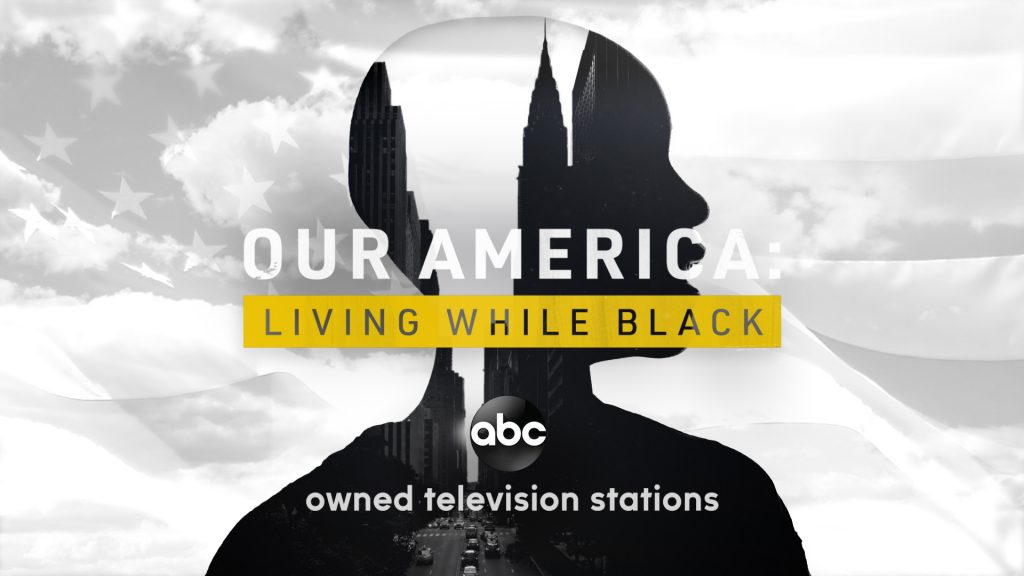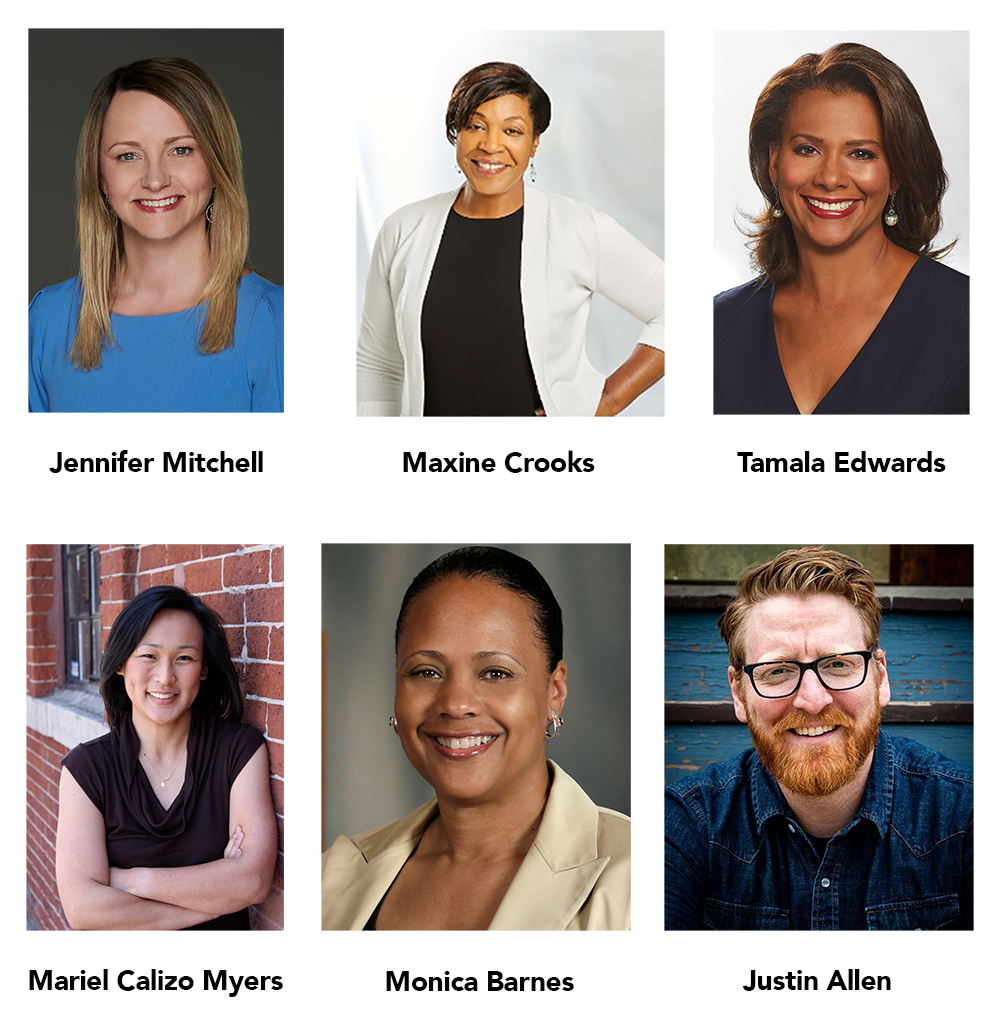
“What this does is it changes the game in many ways,” says Maxine Crooks. Crooks, whose day job is VP of talent development at the ABC Owned Television Stations, is talking about a first-of-its-kind project that’s rolling out this week across the group — a project that unleashes the power of collaboration to break new ground in local TV news.
It’s called Our America: Living While Black. Every night this week, all eight ABC stations are devoting a substantial portion of their late-afternoon newscasts to a series of in-depth, documentary-style “episodes” on aspects of the Black experience. Topics include race-based disparities in economic status, educational opportunity, healthcare and policing, as well as the legacy of slavery. “This is truly about meeting the current moment in time, listening to our audiences, and telling stories that reflect their lives,” says Jennifer Mitchell, SVP of content development at the division, who is overseeing the effort. “So this has been a bit of a labor of love, a passion project.”
The individual segments, which are built around multigenerational families, emphasize hope and perseverance as well as barriers and inequities. “We wanted to find Black families that would share their experiences — not only in the moments right after George Floyd’s murder, but even going back historically — and then give those families a platform within our environment to tell their own stories in their own voices,” says Mitchell. “And that is one way of telling stories in a different way,” says Crooks, “where we are hearing from the people who are impacted by the stories, not just an expert. The people who are telling the story are the experts, because it is their story.”
 Entrepreneur Phil Clark credits his mother, Velma, for his Yale University education
Entrepreneur Phil Clark credits his mother, Velma, for his Yale University education
Besides the first-person storytelling, there’s a lot more that is unusual about Our America: Living While Black, at least in the local news realm. There’s the impressive time commitment of about 15 minutes embedded in regular newscasts each day this week; the animated explainers drawing on the ABC station group’s data journalism team (which we reported on here) to buttress the individual examples with hard numbers; and the nationwide perspective. “We wanted to tell stories that transcended city limits,” says Mitchell. “There are different challenges in each of our communities, and we thought it was important to tell those [stories].”
The project has multiple digital extensions and culminates in an hour-long special airing on all the stations this weekend. Perhaps the most striking aspect is the collaborative way in which the daily reports and the documentary were produced. Mitchell and Crooks were part of a six-person editorial team, a Disney-worthy squad of Marvel superheroes spread across six different cities. “We felt strongly that we wanted to hear different voices,” says Crooks. “Just as we’re hearing different voices from the community, it’s important for different voices to be on the editorial panel.”

That team met regularly over about seven weeks, sharing feedback on every aspect of the project. Just one example: Monica Barnes, community engagement director at WTVD in Raleigh-Durham NC, expressed concerns that some of the graphics inadvertently reinforced racial stereotypes — and got them changed. “Everybody listened to everybody,” says Crooks, “and everybody felt comfortable coming to the table with their thoughts and their ideas. And I think, because of that, we ended up with the product that we did.”
That product reflects an elaborate process that Jennifer Mitchell estimates involved more than 100 people along the way. “You can imagine, just from a production perspective, the enormous amount of work that went into working with that many people across the organization,” says Mitchell. “Being in different cities, in different communities, it was a large effort to bring it all together.”

An initial call for story ideas to all employees, not just news people, yielded more than 115 pitches. The editorial team culled those down to three for each weeknight theme and then sent the stations off to shoot, arming them with detailed production guidelines. “We wanted it to look and feel cohesive, even though they were very different stories, and different stations tell stories in a lot of different ways,” says Mariel Calizo Myers, an executive producer on the editorial team based at KGO in San Francisco.
The newsrooms sent in what Myers calls “polished rough cuts,” which, after a lot of “back and forth with the stations,” were ultimately edited by a team at WLS in Chicago under senior producer Justin Allen. Myers produced the animations and wrote suggested lead-in copy for stations to customize. “This is really one of the first collaborations for the TV group to be done in this way,” says Myers. “We were setting up workflows about how to deliver content, how we were doing the review process once we edited, and seeing how that worked out. So there were a lot of learnings from that.”
 The ABC data journalism team provided context with statistics like these
The ABC data journalism team provided context with statistics like these
There is almost no scripted copy in the taped stories — just some transitions and context provided by an unseen narrator. “It’s important that there is not a singular host, a singular voice. It is not ‘voice of God’ telling you this. It is these people reflecting and echoing one another,” says someone who knows a thing or two about hosts and voices — the only on-air person on the oversight team. WPVI Philadelphia anchor Tamala Edwards was there not to present, but rather to provide her unique experience and perspective, including an eloquent essay that appears on the project’s digital resource pages, like this one from New York’s WABC.
“It was an interesting project in a different role,” says Edwards. “What could we tell them that they didn’t know before? That’s the space people want to be in. And they want to be in a space of: ‘What can we do?’ People hate the feeling of helplessness when it comes to race. So I think what I brought to this, quite honestly, wasn’t my voice — wasn’t my persona as a news person. It was my heart and my brain and my desire for this to be the best it could be.”
“I think that people often think of race [as] ‘Oh, God, that’s scary. I don’t know if I want to show up,’” Edwards continues. “By the end of this, you’re like, ‘Wow, I’m glad I arrived here. And I’m so empowered to think my grandchildren don’t have to be in the same place having the same conversation.’”
Watch the Our America: Living While Black episode on maternal health care
Collaboration within station groups is on the rise, perhaps as a natural evolution but also accelerated by the coronavirus pandemic. Just this year, we’ve written about Scripps’s The Rebound, Sinclair’s content-sharing system, TEGNA’s Verify, Nexstar’s Solutions Journalism project and Fox’s Your Take, among others. Our America: Living While Black is journalism on a scale that no one station could pull off alone, and the editorial team is hoping for lasting impact.
“I’m extremely proud that we are giving the air time within our local newscasts to these stories,” says Jennifer Mitchell. “We’re already moving on to the next topic. This is not meant to make a splash and then we disassemble this team and everybody walks away.”
“We have to do the everyday news. And that is important,” says Mariel Calizo Myers. “But it’s also important to step back, and then step up. So we step back and look at these stories and step up to tell them. I hope more newsrooms take the time to do that.”
“Telling stories in this way is, just to quote the writer David Carr, ‘writing with thickness,’” says Tamala Edwards. “It’s TV with thickness. It’s not just the top spread of here’s what’s happened. It’s as thick and as complex as our lives truly are.”
“Long-term, as we go forward, it’s no longer just a 20-second sound bite,” says Maxine Crooks. “This tells us that we can tell impactful stories that people will listen to, and that people really are hungering for. They don’t just want the run and gun anymore. They want stories that impact their lives and tell their stories.”
Get the Lab Report: The most important stories delivered to your inbox